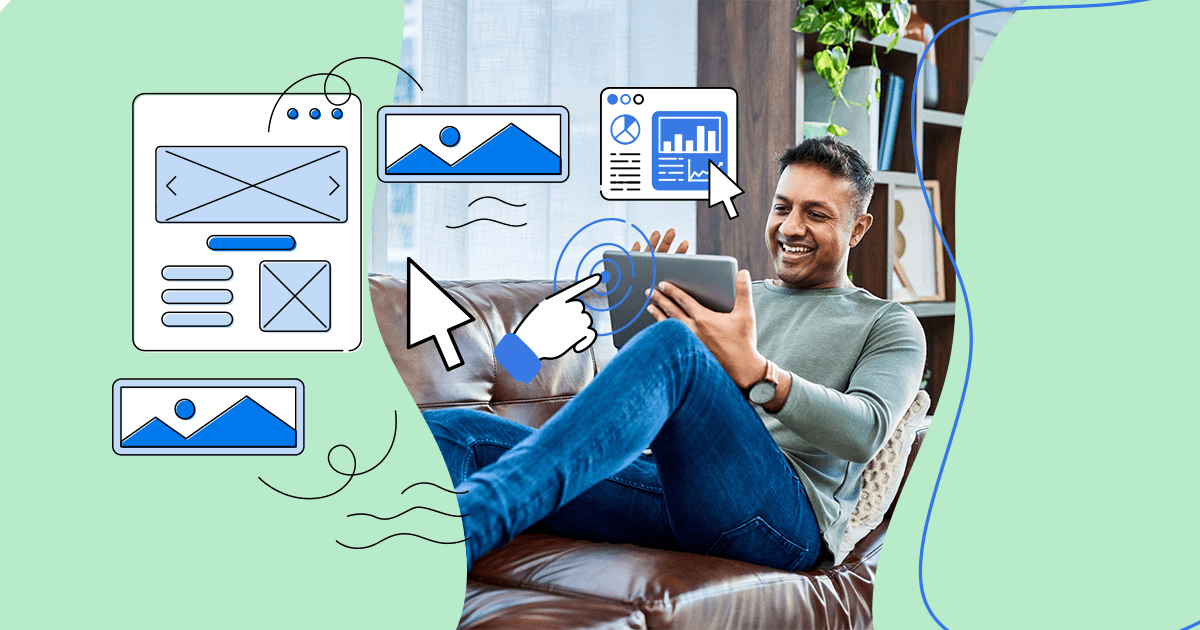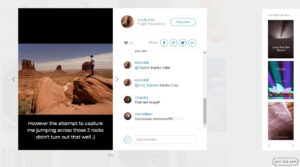To put it simply, demand generation marketing refers to the process of driving interest in a business’s services or products. However, some people already use it as an umbrella term that encompasses activities intending to generate leads, building a relationship with and nurturing them until they become customers.
For this reason, this term is often confused with inbound marketing, that is a strategy to drive prospects through the buyer’s journey, nurture qualified leads and delight customers. Therefore, it is possible to understand inbound marketing as one method to generate demand, among other goals.
In this article, we will explain what is demand generation marketing and how it can benefit your company. To accomplish that, we will present channels of acquisition that you can use to generate demand, strategies, tools, and different types of content that can help you to build rapport with your audience, boosting lead generation and sales.
Which acquisition channels can be used in demand generation marketing?
One of the first things you should consider starting your company’s demand generation marketing strategy is to know the channels where you can make that happen. It is vital to choose the right one for your ideal customer (that is, the most likely to be used by them) to be able to have effective results. To assist you, we will show some options in this section. Keep reading to find out!
Social Media
Through social media, it is possible to reach a substantial amount of prospects. Facebook, for example, registered, on average, 1.66 billion daily active users in 2019. We can conclude that there’s a high chance of attracting prospects to enter the purchase funnel.
Social media is also a useful medium to nurture and establish a closer relationship with your audience because it enables your company to contact it directly. Besides that, the effort to attract prospects will not be entirely yours — your engaged and loyal customers will probably share your posts, tag their friends, or perform other kinds of actions. Moreover, social media allows several types of actions, from posting content to launching a contest.
Website or Blog
Today, organizations use websites or blogs to publish relevant content regardless of their market segment. It does not require high investment and is especially useful to attract and nurture prospects. You can offer, for example, content to explain concepts within your field of expertise or help your audience to solve issues.
Your company can use these platforms for different stages of the buyer’s journey. Therefore, the strategies you use need to cover all of these stages, guiding the audience through the purchase funnel.
Search
Using SEO (Search Engine Optimization) tactics, it is possible to make your website or blog appear on Google or other search engines’ first results pages. This allows your audience to find it easier and increases the chances of getting more clicks.
In addition to that, it helps you to build trust and establish your brand’s authority, since the first pages are known for being the best among the results according to the engine’s algorithms.
Despite being used for decades, this channel is still extremely effective, as Demand Gen Report has shown. If well-executed, an email marketing campaign can attract and engage prospects.
One way to get this result is segmenting your audience. To be effective, your emails need to be received by people that will be truly interested in what you have to offer and it is even better if they are personalized. To do this, use an email automation tool. Other than allowing segmentation and customization, it provides metrics and facilitates every aspect of the process.
In-Person Events
According to the 2019 Demand Gen Report survey, 46% of the respondents acknowledged that in-person events or trade shows were effective to drive early-stage engagement. So, you can also prepare an event (a Q&A session or a conference for example) to have direct contact with your prospects.
Another idea to generate demand is to sponsor a meetup event targeted at an audience that can be interested in your solution. This channel does not require a lot of effort to expose your brand to a group of prospects since they will already be there to attend the event, that is organized by someone else, though it may be costly.
Which strategies are used in demand generation marketing?
Now that you know in which channels your demand generation marketing strategy can take place, find out some of the most popular approaches to put it into practice.
Using Content Marketing
As the name indicates, content marketing is based on creating and distributing content to the audience to build a relationship with it, nurture and retain it. The content can assume many forms — for instance, blog posts, tweets, stories, email newsletters, videos, case studies, quizzes, infographics, white papers, eBooks — and be published in several mediums (social media, blog, email, website).
According to the Content Marketing Institute, in 2019, 70% of the interviewed marketers successfully used content to generate demand and leads. This indicates the potential of this tactic when it comes to generating demand.
The key to producing content to generate demand is to invest in quality over quantity. In this context, quality means that it contains accurate information, resonates with your audience (that is, consider its profile and needs, captivate and engage it), and provides something relevant to them. This is one of the most efficient techniques to build a rapport with your prospects.
Producing Interactive Content
Interactive marketing is often combined with content marketing to deliver unique and engaging experiences that allow the audience to interact with your company’s content and obtain personalized responses.
The possibilities of interaction and responses vary according to the type of content that you use. For instance, your business can create an interactive quiz to give personalized results to your audience according to its answers.
Usually, interactive content grabs attention because it brings several kinds of media together (images, texts, videos) to create immersive experiences. As a result, the audience feels encouraged to spend more time consuming the content, which leads them to seek other assets and know your services better.
Offering Free Resources
Offering a useful asset (such as calculators, quizzes, eBooks, etc.) in exchange for information (for example, email, name, job title, company), your organization helps the audience to easily solve a problem or learn about a topic and turn it into leads (that is, people that willingness demonstrated interest in your solutions by giving you some personal details). Free resources can also be used to nurture the audience depending on which stage it is at the purchase cycle.
As a result, the visitors feel stimulated to look up for more resources and naturally move through the funnel, eventually becoming customers. Ensure their quality and relevance while considering your audience.
What types of content work best for demand generation marketing?
At last, we selected a few types of content that your company can use in its demand generation marketing strategies to accomplish its goals.
Interactive Infographic
Infographics are known for presenting reliable research-based information in the form of images with minimal text. An interactive infographic allows the reader to control his experience, engaging him in educational content, that may include short quizzes and micro-assessments as well as animated elements.
This type of content is helpful for demand generation because it grabs attention from the beginning and provides something valuable to the audience. They will learn about a complex topic thanks to compelling content that makes it easier to understand the ideas presented.
eBook
eBooks are PDF files that address a topic within your company’s field of expertise and can be offered in exchange for filling in a lead form. They are not too in-depth or complicated and usually are illustrated. If you find a subject that interests your ideal customer, it is possible to attract the right audience and get more traffic.
This tool helps you to show your audience that you are willing to help rather than offering invasive advertisements to make sales. Consequently, your audience will remember you when they start looking for a solution later in the funnel.
Interactive eBook
This type of eBook can have even better results since the experience is more dynamic than the one offered by a static PDF file. The content tends to not follow a linear order — the reader decides what to read and when — sometimes including animated features, videos, more images, and even a soundtrack depending on the case.
As the reader interacts with the eBook, the content becomes more relevant. That happens because at the end of each section, he will find suggestions to keep reading, and the interactive eBook makes it possible to recommend chapters according to those that he has already visited. In other words, the material will indicate what he may find interesting based on his previous choices.
Blog post
As we already mentioned, blogs are useful for all the stages of the purchase funnel. To attract leads, you can apply SEO (Search Engine Optimization) techniques, publish content about common issues that you can help with or popular topics related to your field. You can also insert videos, images, and other types of content as well as links to your social media and landing pages. It only depends on your creativity.
In the middle or late stages, you can create content that helps your prospects to recognize their problems, be aware that they need a solution and present your company’s services. Remembering the experiences that it provided, they will be willing to consider it as a good option to help him.
Regardless of the stage, remember to always finish the posts with a CTA (Call to Action) to stimulate the readers to take action. It can suggest sharing the content on social media, reading another article, leaving a comment, contacting your company, or direct to a another asset (eBook, infographic, interactive experience, white paper, quiz, assessment, etc.).
Interactive Quiz
A quiz helps you to get to know your audience (you can track the viewers to assess how they interacted with the content and discover their preferences, for example). Since it is easy to consume and share, engaging, and funny, it can quickly go viral. As a result, it will boost traffic on your page and increase lead generation.
Case Study
Case studies are used to present your customers’ success stories. This content shows who they are, what problems they had before acquiring your services, why they choose your company, how it helped, how the implementation process went, the results, and further plans.
They are an opportunity to present your services in detail. Your audience will understand what it would be like to use your services and discover what exactly they should expect. Among the benefits, we highlight qualifying leads, increasing brand awareness, and accelerating leads (which is proven to be effective according to HubSpot).
Online Tools
Calculators or other online tools are practical and give your audience an immediate solution to an issue. Anyone can find them with an online search. If you decide to use this asset, a good idea is to include it on a landing page that has a CTA, a simple and optional lead form, as well as social media buttons to enable sharing the content. Since they are useful, your leads are likely to share them. Given these points, they can increase traffic and generate leads, for example.
Investing in demand generation marketing allows you to grab your audience’s attention, boost brand awareness, and establish a relationship. As a result, the leads slowly move through each stage of the buyer’s journey and become consumers. For this reason, demand generation leads to a better marketing ROI (that is, increases conversion, traffic, sales, and amount of leads and customers, among other aspects).
If you enjoyed our article and want to learn more about how to use interactive content to generate revenue, check out another resource on our blog.






